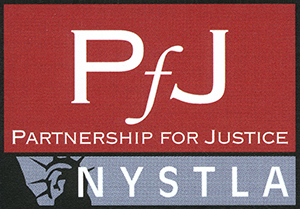Chapter 11 Bankruptcy: What Is a Cramdown?
Posted on July 23rd, 2019 by Oddo & Babat, P.C.
Business Dispute Lawyer
Once a company files a Chapter 11 bankruptcy petition, they gain certain key rights and responsibilities. The filing company becomes responsible for offering a reorganization plan that assigns updated legal rights to the creditors. The reorganization plan will specify how much, and when, each class of creditor is to be paid. All impacted creditors will have an opportunity to vote to accept or reject this reorganization plan. However, in some cases the debtor company may be able to get their planned approved over the rejections of creditors. This is referred to as a cramdown. If you have questions about cramdowns, or Chapter 11 bankruptcy in general, please contact an experienced bankruptcy attorney for immediate legal help.
Cramdowns: The Requirements
The confirmation of Chapter 11 bankruptcy plans is governed by Section 1129 of the United States Code. As a baseline rule, reorganization plans must be approved by each class of affected creditor. However, the code includes a ‘cramdown’ provision, which provides an exception. However, this can only be done if the plan meets certain strict legal requirements. Specially, a cramdown can only occur if a reorganization plan:
- Has at least one class of creditor voting in favor of it
- Ensures that each objecting creditor class receives no less under the plan than they would if the company was liquidated
- Is feasible, meaning that the likely result of the plan cannot be future liquidation or further necessary restructuring
- Does not unfairly discriminate against any objecting creditor class
Finally, in addition to those requirements, a cramdown can only move forward if the reorganization plan treats each objecting class fairly and equitably.
Fair and Equitable Treatment: Absolute Priority Rule
Determining whether or not treatment is ‘fair and equitable’ is complicated in any legal case. For cramdowns, there is a two-part standard for assessing a reorganization plan’s fairness and equitability. The plan must ensure that no payment can be made in excess of the claim and that it conforms to the absolute priority rule.
The absolute priority rule states that all objecting creditors cannot be forced to accept partial payments, via a cramdown, if a lower priority level of creditor or equity holder is receiving any payment at all or is allowed to maintain their current interests. As a simple example of the application this rule: absolute priority guarantees that, when a cramdown occurs, unsecured creditors cannot get paid at all before objecting secured creditors are paid in full.
Contacta a Law Office Today
If your business is struggling with overwhelming debt obligations, a lawyer can help. If you have any questions about cramdowns, business bankruptcy or creditor’s rights, please contact a law office today. In any bankruptcy situation, you should consider speaking with an experienced bankruptcy lawyer who will evaluate your case, advise you of your liabilities and suggest the best course of action.


 I consulted with David the first time a couple of years ago on a serious matter that affected a very close member of my family. Not expecting a good experience from this serious situation coupled with an attorney consultation, the entire thing surprised me as it was pleasant, professional, and completely successful. We found him clear, direct, generous and extremely knowledgeable throughout the process. I give my very strongest recommendation
I consulted with David the first time a couple of years ago on a serious matter that affected a very close member of my family. Not expecting a good experience from this serious situation coupled with an attorney consultation, the entire thing surprised me as it was pleasant, professional, and completely successful. We found him clear, direct, generous and extremely knowledgeable throughout the process. I give my very strongest recommendation








